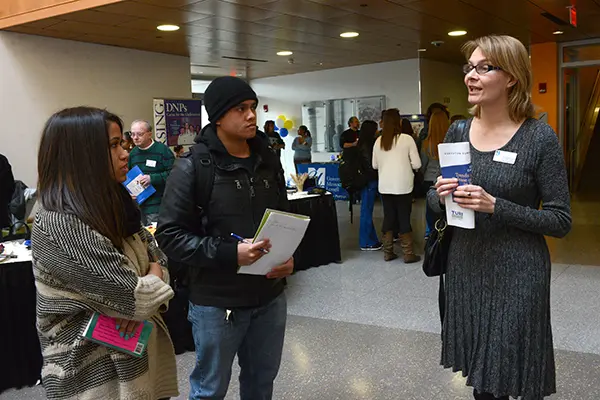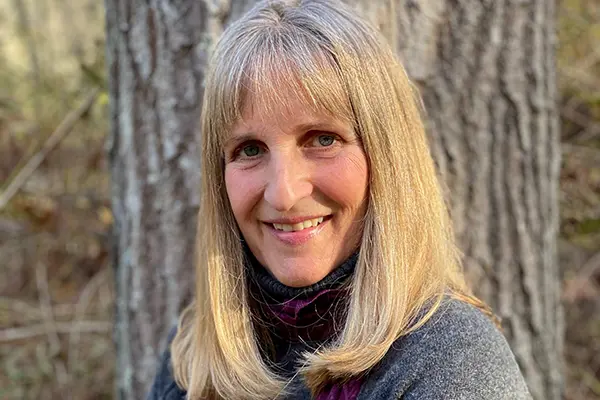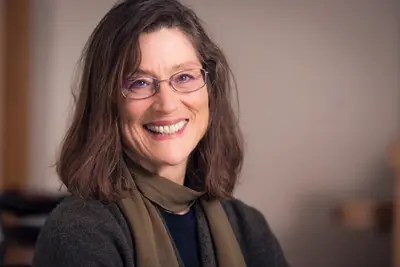Prof. Margaret Quinn and Team Pivot to Address COVID-19
 Image by UMass Lowell
Image by UMass Lowell
02/25/2021
By Katharine Webster
A year ago, when Zuckerberg College of Health Sciences researcher Margaret Quinn began work on a $2.48 million federal grant to make home health care safer for caregivers and patients alike, she had no idea she’d be doing it amid the worst pandemic in a century.
But as the spread of COVID-19 became a crisis, Quinn and the team for the Safe Home Care Project, part of the Lowell Center for Sustainable Production research center, knew that they had to respond quickly. Both patients and aides – who may visit several homes a day to bathe, feed and provide other personal care for clients – were at high risk of infection.
“Home health care is one of the top five fastest growing industries in the United States,” Quinn says. “Yet it’s an almost invisible industry and workforce, because care takes place in the privacy of people’s homes.”
And that industry, and the people who depend on it, urgently needed new support and resources, she says.
“Suddenly, aides who were coming into people’s homes were at high risk of infection with COVID-19 from work and community exposures,” Quinn says. “And most clients were over 65, at high risk of infection and serious disease. A lot of people started canceling their aides’ visits, and some elders risked being alone or had to have family members step in. Everyone needed help, including the aides, who were losing work.”
Quinn, Public Health Research Profs. Pia Markkanen and Susan Sama, and the project team responded quickly, working closely with longtime partners including home care agencies and trade organizations, the union representing home care aides (1199 SEIU), the state’s Executive Office of Elder Affairs and the Betsy Lehman Center for Patient Safety, another state agency.
The research team surveyed home care agency managers and tried to address their greatest needs: access to medical PPE, disinfection supplies and COVID-19 testing for aides; recommendations on infection prevention practices; and additional workforce safety training.
“We provided guidance, based on our research and best practices, to see if we could help the industry get back to full capacity providing care for the elders of Massachusetts,” she says. “And our collaborative efforts worked pretty well.”
As Quinn and team wrote protocols and advised on training, the home care agencies worked overtime to source N95 respirators, face shields and disinfectants for their workers. The joint effort restored clients’ confidence, and home care is now being provided at pre-pandemic levels, Quinn says.
To help other states and agencies confronting the same challenges, Quinn and the other researchers have spoken at online conferences. The Safe Home Care Project team and the Betsy Lehman Center for Patient Safety also published an open access scientific journal article and statewide report describing the impact of COVID-19 on the home care industry.
Work Informed by Decades of Research
 Image by Tory Wesnofske
Image by Tory Wesnofske
They face multiple hazards, including musculoskeletal injuries, needle sticks, abuse and violence, and excessive exposure to harsh disinfectants that can trigger asthma and other respiratory illnesses. Yet because they work in patients’ homes, addressing those hazards can be complicated, she says.
Now a professor emerita, Quinn is the principal investigator on the grant from the National Institute of Occupational Safety and Health, part of the Centers for Disease Control and Prevention, which has funded the Safe Home Care Project since 2004.
Working with the same partners – employers, aides, patient advocates and the state – the researchers will draw on their past work to recommend concrete interventions, then test them to see if they reduce injuries and other health hazards for aides. That will also help patients, Quinn says.
“Improving safety in the home will help the aides that work there. We also fully respect the needs of the people who are getting the care and the autonomy they need in their homes,” she says. “We see the needs of aides and patients as totally in concert, and we can develop solutions that are respectful and healthy for both parties.”
Providing Stability for a Vulnerable Workforce
While Quinn and team have identified hazards and advocated for improvements over the years, from using syringes with safety devices to installing grab bars and using lifts when patients need assistance moving, there is still more work to do, she says.
 Image by UMass Lowell
Image by UMass Lowell
Then, there’s the low pay for aides themselves, also based on those reimbursement rates: The median pay nationally for home care aides is about $25,000 a year, even as they save families and government programs billions of dollars, Quinn says.
In fact, it was only in 2015, after lengthy legal battles, that the U.S. Supreme Court ruled that home care aides – who are 87 percent female, 62 percent people of color and nearly one-third immigrants – were required to be paid the federal minimum wage, she says. Massachusetts law mandated minimum wage for home care aides before the Supreme Court did.
“Home care should be a high priority for the whole country, because this is a vital and growing resource for our rapidly aging population,” Quinn says. “Home care enables elders to live in their homes rather than going into nursing homes.”
Addressing workplace hazards and pay would help to stabilize the industry, she says, because most home care aides love their jobs and would like to stay in the field.
“The outstanding thing is how much aides love their work,” Quinn says. “It’s about the relationships they’re able to make with their clients and the clients’ families, and knowing that, when they leave, that client has spent one more day with respect and dignity in their home.
“That is very rewarding.”




